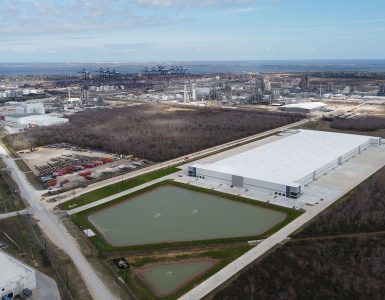Booming Demand For Lab Space Is A Rare Bright Spot For Real-Estate Developers
Business Insider, Oct. 9, 2020
By Alex Nicoll
Empty hotel rooms, half-full offices, and shuttered retail. The coronavirus has wreaked havoc on the most established commercial real estate asset classes, creating short-term financial crunches and raising long-term secular concerns as remote work is tested and e-commerce rates rise.
Other asset classes, once alternatives, have become institutional investing gold standard. Logistics assets such as warehouses are providing a punch to the portfolio of the world’s largest landlord, Blackstone.
As industrial real estate investing becomes more crowded, and many of the other large asset classes slump, attention is turning to life sciences real estate – or space that’s used by pharmaceutical and biotech companies for research, development, and even manufacturing of new diagnostics, therapies, and vaccines.
The life science industry had been growing rapidly before the pandemic, attracting $17.4 billion in venture capital funding in 2019, up 370{486b2a1f74edcc5180758f2b50c14395cd5abf419f5fc0bc049abfed8e823f44} from $3.7 billion in 2008, according to a Cushman & Wakefield report. Funding has continued to pour into the sector, even as coronavirus has slowed down venture funding overall, creating demand for more lab space.
Ian Anderson, senior director of research at CBRE, told Business Insider that life science accounted for 10{486b2a1f74edcc5180758f2b50c14395cd5abf419f5fc0bc049abfed8e823f44} of leasing activity in the US by square footage since the coronavirus hit. The average for 2018 and 2019 was 3.8{486b2a1f74edcc5180758f2b50c14395cd5abf419f5fc0bc049abfed8e823f44} of leasing. This difference, according to Anderson, is not because of major bump in life science leasing, but it held steady while other sectors collapsed.
However, life science isn’t an easy business. We spoke to eight experts, including life science developers, real estate professionals, and one lab operator about life science real estate. They told us that while life science is attracting more money and interest from the broader real estate world, its high costs and risks, the deep knowledge in lab building required to do it well, and the ceiling on how big the actual market can be, prevents it from being a cure-all for an ailing portfolio.
“It’s not going to be a savior,” Anderson said. “Office is down, and life sciences may seem to be a savior, but this is still a small segment, drop in the bucket against a larger trend.”
Why life science real estate is booming 2020 has been a banner year for cash pouring into life science companies. Crunchbase calculated that life science-related companies’ venture funding was up $3.3 billion in the first half of 2020 compared to the first half of 2019, for a total of $16.6 billion.
Crunchbase also found that life science IPOs have already raised more money this year than last. Billions in research funds handed out for coronavirus research by the National Institutes of Health and continued M&A activity round out the record influx of cash into the sector.
While other segments of the economy took a long pause at the start of the pandemic, the essential workers in the life science industry barely stopped at all. Neither did the deals.
“There was no pause in the life science industry,” Danielle Lauzon, co-chair of law firm Goodwin Procter’s PropSci practice said.
Using Real Estate To ‘Future-Proof’ The Supply Chain
Shea Harrelson, co-founder of Charleston, South Carolina diagnostics company Vikor Scientific, told Business Insider that it had expanded as a result of coronavirus testing. In April, the company had moved into WestEdge, a brand new life sciences development in Charleston, and the influx of coronavirus tests required them to rapidly lease two additional floors in the building.
Vikor Scientific is now moving its logistics operations to a warehouse space near the airport, to speed up the time they can assemble and ship out 25,000 test kits a day.
“If you don’t have the logistics, especially in our business, you will fail,” Harrelson said.
While lab space is extremely important to life sciences, if the supply chain isn’t working, experiments and research can’t move forward. When the coronavirus disrupted global supply chains for everything from toilet paper to the Nintendo Switch, the life science industry had to deal with shortages as well.
This has led the industry to focus on “future proof’-ing the supply chain from further disruptions by repatriating production to the United States by purchasing industrial space for manufacturing and logistics, according to JLL’s new head of life sciences, Travis Mccready.
Joel Marcus, founder and Chairman of Alexandria Real Estate Equities, one of the largest life sciences REITs, said that the firm has seen “a significant uptick” in requests from the firm’s biotech clients to bring supply chains back to the US. Marcus said that the increase in requests is partially result of the low-tax environment under President Trump.
In one market, which Marcus wouldn’t specify, 50{486b2a1f74edcc5180758f2b50c14395cd5abf419f5fc0bc049abfed8e823f44} of their development requests were to repatriate supply chains back to the US.
“If Biden wins and immediately raises corporate taxes, we could see this reverse pretty quickly,” Marcus, who is also a large donor to the Republican party, said.
The History Of Life Science Real Estate
Biotech uses large molecules, often from living organisms, to create vaccines, treatments, and diagnostic tools, in contrast to the established pharmaceutical industry that uses chemicals. The modern biotech industry’s roots were laid in San Francisco in the 1970s, setting the stage for its recent meteoric rise around the turn of the century.
“The game-changer was, I would posit, being able to map the human genome which opened up a cornucopia of opportunity,” CBRE’s Anderson said, referencing the Human Genome Project that completed in 2003.
This was also a real estate game-changer. Pharmaceutical companies needed large, suburban campuses to protect their IP and prevent chemical contamination of neighbors. In contrast, biotech’s reliance on the newest research means that clusters have popped up around leading academic and medical institutions, like Harvard and MIT in Cambridge, Massachusetts, and Stanford in the Bay Area.
“If you go back 20 years, a lot of drug development was super-secret,” Adam Sichol, cofounder and managing partner of life science real estate firm Longfellow Real Estate Partners told Business Insider, “It was happening on pharma campuses and there wasn’t this whole concept of collaboration and serendipitous meetings and the collisions that happen in a research cluster.”
As demand for the smaller, more distributed labs that life science space requires grew in some major cities, the industry grew along it. Alexandria Real Estate Equities’s market cap grew from $3.61 billion in mid-September 2008 to more than $20 billion today as it has built out massive campuses like the massive Alexandria Center in Cambridge, MA and the Alexandria Center for Life Science in Manhattan.
In late 2015, Blackstone agreed to acquire BioMed Realty Trusts Life Science portfolio for roughly $8 billion, a turning point for institutional investment.
“When Blackstone bought BioMed, that marked a change in institutional thinking on the space, and more people started paying attention to it,” Sichol said.
In 2018, commercial real estate bellwether Brookfield acquired life science REIT Forest City for $11.4 billion.
Gayle Farris, the former 25-year CEO of REIT Forest City, is now leading the construction of a biotech campus at Houston’s Texas Medical Center, the largest medical center in the world, for the Transwestern Development Company. She cautioned that life science space is a challenge for new entrants.
“This is not office space, this is its own animal, and you need to understand this kind of space,” Farris said.
Why It Can’t Be A “Savior”
Money has been flowing into the space as of late, with Alexandria Real Estate Equities raising $1.1 billion for a share offering early this year that was only discounted 2.6{486b2a1f74edcc5180758f2b50c14395cd5abf419f5fc0bc049abfed8e823f44} from its existing share price, compared to a range of 3-8{486b2a1f74edcc5180758f2b50c14395cd5abf419f5fc0bc049abfed8e823f44} previously.
New clusters are also popping up, from the Texas Medical Center’s attempt to create a “third-coast” for biotech in Texas, to CBRE development subsidiary Trammell Crow Company breaking ground on the first lab in Fulton Market in Chicago.
“The traditional real estate investor who might have been looking at investing in an office building now looks and says I don’t know what office occupancy and leasing will look like going forward,” Andy Sucoff, chair of Goodwin Procter’s Boston office and co-chair of its PropSci practice, told Business Insider. “Life science may be more expensive to build and develop, but it seems a little more certain right now.”
For developers or investors entering into the space for the first time, investing in staff that not only knows the real estate and lab requirements but deeply knows the science is key, said Sucoff and Lauzon.
This is essential to prevent real estate developers from flooding the relatively small market with low-quality supply.
“The risk there is you have a number of different operators deliver lots of space, and lots of space is better than others,” Sichol said.
If developers can’t demonstrate competence, they may have a hard time attracting leasing brokers for the space.
“Leasing brokers really show concern when someone rolls into town and they haven’t done one of these buildings before. Without that expertise, agents are hesitant to work with new developers in the space,” Sichol said.
Lab space has much more intense requirements than most buildings, leading to higher upfront costs. Labs need top-tier HVAC systems and exhaust, 13 feet high ceilings, floor plates that can hold heavy equipment, and internal loading docks. The stakes are high, with errors having the potential for catastrophe.
With a glut of retail space, and the potential for a glut of office space as well, the conversation inevitably is turning to conversion into lab space, just as retail space is being converted into residential space. Conversion of some office and industrial space is possible, but it both needs to meet ceiling height and floor load requirements to be worth converting and needs to be in the right location in a cluster, preventing it from being a silver bullet.
Location is the key driver for successful lab space, with scientists placing a premium on being close to universities, medical centers and other startups doing cutting-edge research.
“You have to believe that if you build it they will come,” Farris said. “If you have the right product in the right place, they will come.”
Beyond the challenge of building and location, there can be a misalignment between the timeframes at which investors are looking to make money and the more long-term value creation of labs.
“The other challenge is that most investors are looking for a shorter time frame, 5-year investment, 7-year investment, and the value creation here is over the long-term hold,” Farris said.
Family offices, with their long timeline, has become big investors. Meanwhile, institutional investors have focused on buying into “top of class, best location,” whether directly like Blackstone and Brookfield or through buying into REITs that have compiled a portfolio of these stabilized assets.
Still, it’s never going to grow to the size of retail or office, just by virtue of the niche it operates in.
“Life sciences is still more of a smaller sector,” Alexandria’s Marcus said. “It doesn’t have the breadth and depth of those sectors, doesn’t have the size. There is a lot of money trying to get into life science. Some of it is stupid money.”
Transwestern Releases Intelligent Building App Powered By Cohesion Platform
Associated Press, Oct. 19, 2020
Transwestern, a privately held real estate firm, and Cohesion, a smart building SaaS company, announce that they have launched TranswesternHub, an intelligent building software platform…
Increasing Demand For Cold Storage Spurs Spec Projects, Institutional Investment
National Real Estate Investor, Oct. 15, 2020
The majority of new cold storage construction is taking place in port-centric and coastal markets, often referred to as the Elite 11 markets, notes Lori Zuck, managing director for the industrial group in the New Jersey office of real estate services firm Transwestern…
Workers Return Warily To The Office, As Employers Embrace Slew Of Safety Measures
Star Tribune, Oct. 24, 2020
The efforts suggest that reports of the death of the American office may be premature. Many businesses “had this notion that we can do [remote work] forever,” said Jim Montez, Minnesota leasing vice president at Transwestern…
Transwestern Relocating Southeast Regional HQ To Atlanta Financial Center
Metro Atlanta CEO, Oct. 28, 2020
Transwestern announces its Southeast regional headquarters is departing Tower Place after 10 years and relocating to the City Club of Buckhead’s former space at Atlanta Financial Center, a 914,774-square-foot office campus at 3333, 3343 and 3353 Peachtree Road NE in Atlanta…
The CRE Industry Is On The Cusp Of Historic Change, And Better Child Care Needs To Be A Part Of It
Bisnow, Oct. 28, 2020
Transwestern President-Midwest Mike Watts said Transwestern is trying to make its workplaces more inviting to employees who are also caregivers. It may establish child care facilities within its buildings, possibly with tutors, but that could mean dealing with a maze of state and municipal rules
























